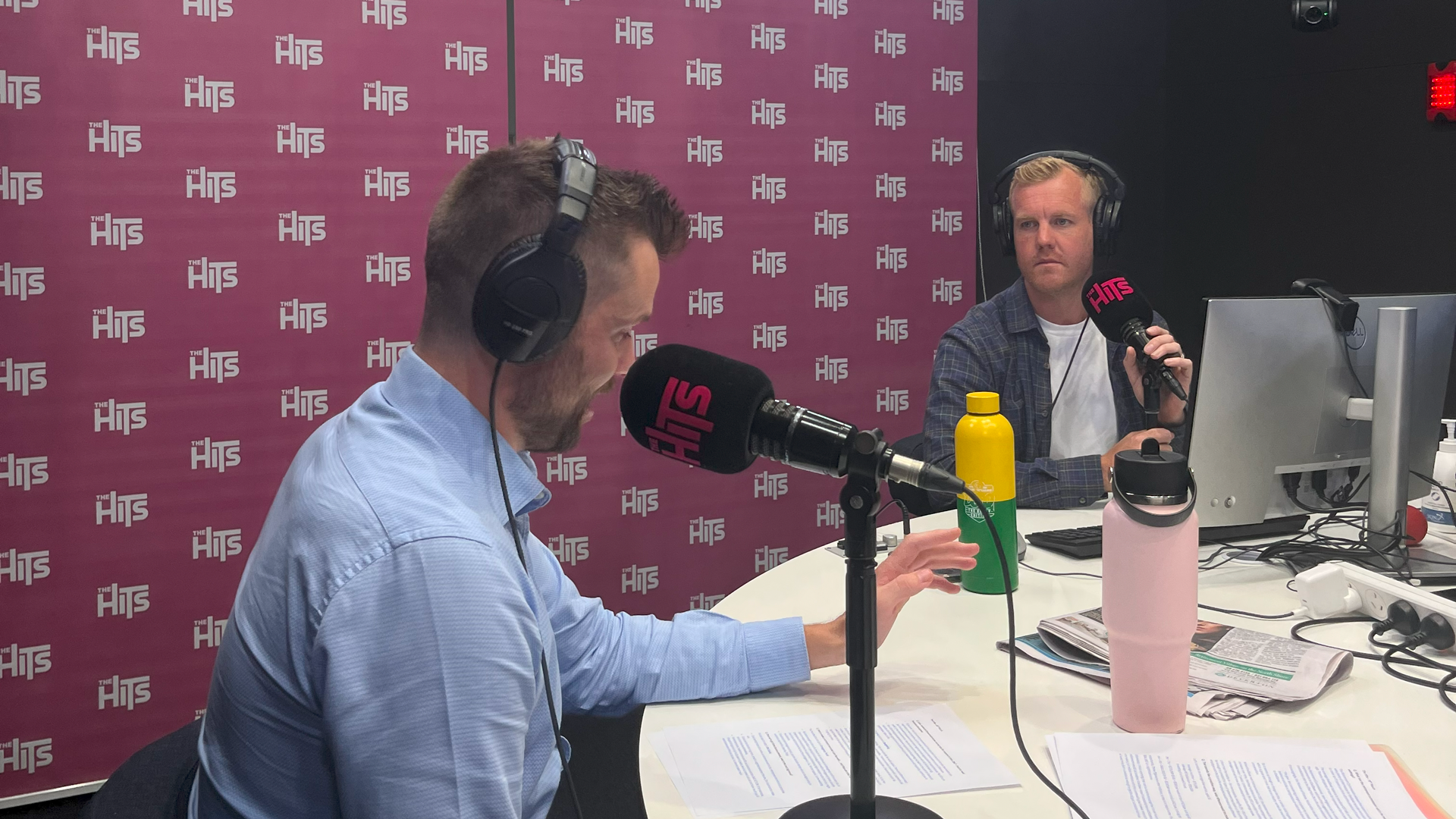Recent company updates from some of New Zealand’s leading businesses indicate increased activity compared to this time last year. Is this a sign the economy is improving? Milford Investment Analyst Jeremy Hutton breaks down the data with Ryan Bridge, including influences such as the OCR, interest rate outlook and labour market.
Click here to download the MP3 file or listen to the podcast on your favourite platform:
Bridge talks Business: 18 November 2025
Episode Transcript
Ryan Bridge
Kia ora and welcome to Episode 57 of Bridge talks Business with Milford. If you’re looking to fix your mortgage soon, this episode is for you. How big a rate cut are we likely to get this side of summer? We’ll look at the data with Jeremy Hutton from Milford, plus a look at how the economy’s performing by looking at the company results we’ve had in the last few weeks. First, your top five business bits.
1. The US government has reopened. Finally, we will see some US data released this week after the bean counters’ return after six weeks at home.
2. China’s economic data was a touch weaker than expected for October. The powerhouse continues dealing with a sagging property market, and consumer spending is also sluggish. Growth slows for the fifth month in a row there.
3. The Australian labour market continues to show strength, with the unemployment rate falling back to 4.3%. This better-than-expected result has basically killed any expectations of further rate cuts from the RBA, given inflation also continues to run hot as those government subsidies for power prices start rolling off.
4. New Zealand card spending and migration data has showed sequential improvements. This is a sign things are finally picking up down under.
5. This week equity investors will be focused on Nvidia, the world’s largest stock, reporting quarterly earnings. We also start to get some of that US economic data release that we missed during the shutdown. Some employment data in particular, will be closely watched for signs of weakness.
Now, today, we’re on the hunt for those mythical green shoots that everyone’s talking about in the economy. Turns out we’re actually starting to see evidence of some, which is great news for all of us. I’m joined by Jeremy Hutton, who’s an Investment Analyst at Milford for today’s episode. And just a reminder, this segment is informational only and should not be considered financial advice. Jeremy, welcome back.
Jeremy Hutton
Morning, Ryan. Good to be here.
Ryan Bridge
Good to see you. Alright. We’re going to talk about the sort of green shoots situation. And you’ve been looking at company results. Are we seeing some green shoots?
Jeremy Hutton
Yeah, I think it’s pretty clear that we are. I mean, it’s currently in the middle of AGM season here in New Zealand, and quite a few NZX-listed companies have updated the market. They’ve given, I suppose, their view on the past three to six months, and then how they are viewing the future. And a few really key ones are Freightways and Mainfreight, which are both trucking / courier businesses. They reported some pretty strong numbers in the last few weeks. And I think that just demonstrates that people and customers in the New Zealand economy are starting to move a bit more goods around – more activity happening. And, importantly for them, same customer volumes were increasing versus the prior year. So, I think in terms of those two companies, they’re generally good bellwether stocks for the New Zealand economy. And they’re seeing those improvements.
Ryan Bridge
Because that gives us an indication of how much we’re moving goods around the country, right?
Jeremy Hutton
That’s right. Activity, customer volumes – are they looking to order more or move more – are their customers demanding more as well? So yeah, good to see that extra activity coming through. It’s been a very tough two or three years in New Zealand. So, that’s the first time we are really starting to see that hard data – proper company evidence – that things are improving here in New Zealand.
Ryan Bridge
Great. Because we’ve been talking about green shoots for so long, I feel like it’s a big myth. Like it’s never going to happen. What about Port of Tauranga? You’ve been looking at them as well in a similar vein to Mainfreight.
Jeremy Hutton
Yeah. That’s right. Looking at their volumes and they had an AGM and a trading update as well. And so Port of Tauranga is quite unique. They’re more an export port. And we know that those have been performing really strongly – like dairy and kiwifruit. So, the market expected their volumes to be strong as well. But interestingly, in their numbers they had their container volumes, which was up 6% versus the prior year.
And what that is saying to me is that imports are also improving given how strong that number is. And so is that New Zealand households ordering more retail goods, bringing more stuff in from overseas? Is that evidence that the interest rate cuts are coming through to households? So they’ve maybe got a bit more disposable income and looking to spend a bit more. So, yeah, I think again for that Port of Tauranga update, that there was some evidence that New Zealand consumers are feeling a little bit better.
Ryan Bridge
So tick, tick, tick so far. What about NZME? NZME is my primary employer in the media business. But it’s always a good indicator – an early indicator – of economic activity, right? Because one of the first things businesses do is spend money on advertising when things start to pick up.
Jeremy Hutton
Yeah, you’re right. We’re quite at the pointy end of the economic cycle. And businesses just haven’t been spending that money when they haven’t seen that demand there on advertising. So, they had an interesting trading update. They lifted their earnings guidance for the year as well. And one of the areas they called out was that their revenue line was better than expected. That would imply advertising better. And maybe their underlying customers looking for advertising space are seeing demand there. So, you know, they’re looking to spend a bit more on advertising, which is really good.
Ryan Bridge
Because when you come back you want to come back strong. And you do that with NZME. Jeremy, so where does all of this leave us with interest rate cuts. Because the Reserve Bank’s final meeting is next week.
Jeremy Hutton
Yeah. That’s right meeting Wednesday next week. The markets pricing in another 25 point cut. We’ve had a lot of cuts already – over 300 basis points already. So most of that stimulus has come through into households now, and mortgage payments are coming down materially. But another 25 points and the market sort of thinking maybe another one next year. But it’s probably a bit of a wait and see over the summer break. So, you know, a lot of cuts have been delivered now really, there’s a lot of stimulus from the Reserve Bank. So do you start to see a bit more of a tick up in some of those more sensitive areas – in hospitality and retail? Those sectors are still lagging a little bit, haven’t seen evidence in those sectors, but when consumers and households have a little bit more extra spend, do they go out and go for a meal or spend a bit more over Christmas?
Ryan Bridge
So what about the chances of a double whammy?
Jeremy Hutton
There’s a slight chance that the markets, put on that. But, I think the main consensus is that it’s only 25 points at this point.
Ryan Bridge
Okay. Right. So let’s talk about the other bits that the Reserve Bank will be looking at -housing, unemployment, for example. Housing is interesting because the prices aren’t really going anywhere. But volumes you were saying are up.
Jeremy Hutton
So I mean, pricing has been dead flat for two or three years now, which is quite a unique place for New Zealand housing. It tends to whipsaw either way. So flat pricing sort of continued as the interest rate cuts have come through. But I mean, I’m looking more at the volumes at the moment, and they’ve been very consistently up this prior year – around 10 to 12% each and every month. And that’s just signalling to me that there’s more activity happening in the housing market every month. There’s more transactions happening, more liquidity. And that’s a positive, too. Even though prices aren’t moving so much, you are seeing stock move. And the average level of sales on a rolling 12 month basis is actually now above the averages – over the historical averages. So, I think that’s the first step you see in the housing market. And it is important that we keep moving the stock and the activities happening. So, yeah, there is some evidence that the interest rate cuts are helping in that regard.
Ryan Bridge
And unemployment, because what the interest rate cuts have been doing is putting money in people’s pockets, but we’ve still been too nervous to spend because we’re worried about our jobs.
Jeremy Hutton
Yeah.
Ryan Bridge
So are we definitely bottomed out on the unemployment front?
Jeremy Hutton
Oh I wouldn’t say definitely. But I think there’s a a high chance that we’re past peak pessimism in the labour market. I mean we had, you know, fairly ugly 5.3% unemployment rate at the last labour market update, and there are a few points that I’m looking at outside of that. And two of those are the full jobs number. So this is the total amount of jobs in aggregate in the New Zealand economy. And then the total hours worked in the New Zealand economy. And both of those numbers have been increasing a little bit off the bottom, over the past two or three months. So that’s showing me that there’s more jobs, more labour coming into the New Zealand economy.
And then maybe people can feel a bit better about making a spend or making a purchase if they’re not so concerned about their jobs and you’re not seeing the headlines of big job cuts coming. So I think we’re past peak pessimism in the labour market – job adverts are up as well. So again, businesses signalling that they’re potentially looking to hire a bit more and feeling a bit better about the future.
Ryan Bridge
Growth. We saw that hideous number for quarter two, which kind of shocked everyone – took everyone by surprise – although likely to be revised down. What are we expecting for quarter three?
Jeremy Hutton
Quarter three I think we’ll see a bounce back in growth. Some of the real time data we’re seeing is coming for a bounce back. And it’s interesting. I mean, I sort of look at it over, you know, as we look into 2026 and there’s a few levers of our economy that are performing reasonably well. We’ve got dairy, agriculture, horticulture, and that continues to be strong, likely continue into 2026. Tourism. It looks like our tourist numbers in the last few months the arrivals have had decent increases versus the prior year. So you know, potentially in for a bumper tourism summer. And we’re still behind the pre-Covid level. So again it feels like a bit of an easy win to just get it back to where we were previously.
And then I suppose the next leg is that more interest-rate sensitive sectors where we haven’t really seen it – construction, housing, retail, hospitality. But potentially, with those interest rate cuts that should be coming, I don’t think it’s going to get any worse than it was this year. So, we’ve got a few bigger engines in the New Zealand economy starting to be a tailwind rather than a headwind. So a bit more positivity going into next year.
Ryan Bridge
Brilliant. So by the time I see you, because this will be our last episode together before next year, by the time I see you next year, Jeremy, we will come back tanned and rich as a country.
Jeremy Hutton
Potentially. But, yeah, I’d say we’re coming off the bottom. So there is still a lot of work to do, but it’s trending in the right direction, which is positive.
Ryan Bridge
The only way is up. You would hope. Jeremy, good to see you. Thank you very much.
Jeremy Hutton
Thank you Ryan. Cheers.
Ryan Bridge
That was Jeremy Hutton, an Investment Analyst at Milford. And don’t forget, you can like, follow and subscribe this podcast wherever you like to listen. Share it with your friends. We love having you on board, listening each and every week. Until next week. Don’t forget to invest in yourselves.
Missed previous episode? Don’t worry! Click here to catch up now.


